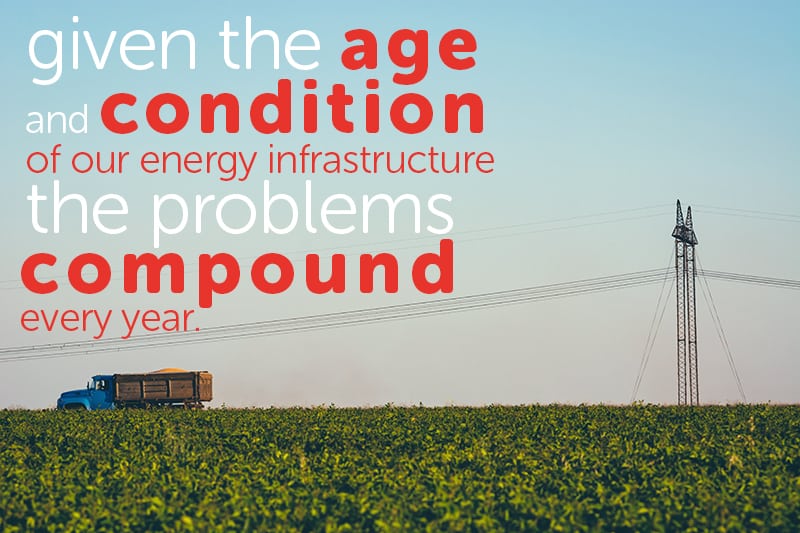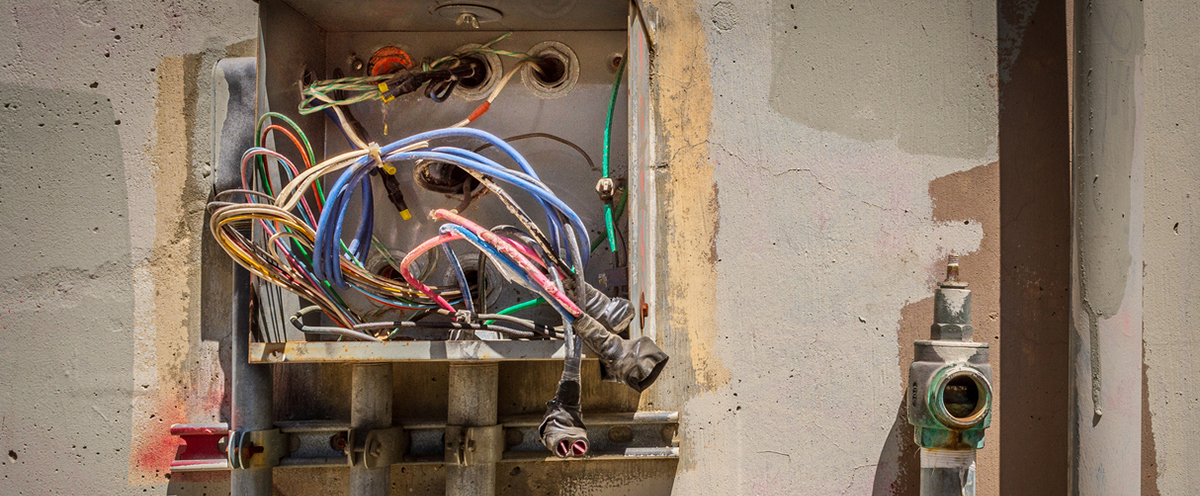Most energy consumers don’t think about the electricity and natural gas that powers their appliances and heats and lights their home – unless there’s a problem. Given the age and condition of our energy infrastructure, the problems compound every year.
Through the 1980s, significant power outages averaged fewer than five per year, but that number has done more than steadily climb – it’s begun to skyrocket. There were 76 significant outages in 2007 and more than 300 in 2011.
Erosion of Energy Infrastructure Has Significant Consequences

Some pipelines date back to the 1880s, with most natural gas pipelines being installed prior to 1980. Pipeline breaks and refinery outages cause supply disruptions, which, in turn, lead to higher prices. Reported spills have increased from 573 in 2012 to 715 in 2015.
These soaring numbers have begun to erode consumers’ trust and faith in their energy utilities – and they’re looking to find their own solutions.
The problem isn’t enough energy – in fact, with the growth of renewables, more energy is being produced than the grid can often handle, which creates its own set of problems. The issue is the age of the system. More than 50 percent of our energy infrastructure was built prior to the 1970s, and another 20 percent was built in the 1970s and 1980s.
Blackouts have cost the country’s economy billions, but addressing outdated infrastructure will cost billions more – as it stands, the infrastructure, which is a privately owned piecemeal patchwork, may be worth $876 billion. Other estimates put it at between $1.5 and $2 trillion, with a complete replacement costing $5 trillion.
The American Society of Civil Engineers has given the infrastructure a D+ because so much of the system has aged beyond reasonable use. They estimate that tens of billions of dollars will need to be invested into the infrastructure to improve it. Department of Energy estimates show that more than $12 billion must be spent to maintain natural gas pipelines, stabilize the grid and provide the capacity to handle the influx of renewable energy.
Growth In Renewables Further Stresses Grid
The demand for energy has slowed significantly as homeowners seek out energy efficiency, often for its cost savings, but more and more frequently for its environmental benefits. Over the past decade, electrical usage has been flat, and total energy use has declined by 2 percent.
The lion’s share of innovation – and customer growth – will be in renewable energy. The aging grid isn’t set up to handle the integration of renewable energy, however. Energy can’t be stored on the grid, but in the form of coal, natural gas and nuclear materials. One way to improve the integration is to upgrade the transmission network, so energy from places such as Texas, where there has been heavy investment in wind energy, can be transmitted to places without inexpensive and environmentally friendly energy.
Many utilities face maintenance and upgrade costs while having rate increases capped by regulators, and upgrading transmission lines isn’t easy or inexpensive. An answer may lie in distributed generation and microgrids to upgrade the energy infrastructure.
A microgrid’s ability to operate independently of the main grid can reduce outages, acting essentially as back-up, and being flexible enough to cover anything from a single home or business to jails, hospitals, college campuses and entire neighborhoods. Microgrids also allow connections to distributed energy generators, such as solar panels and wind turbines – and tying into a local energy source will reduce transmission losses. In addition, during a cloudy day, the connection through the microgrid to the main grid allows continued function without a loss of power.
It’s estimated the global distributed energy generation market, driven by lowering costs, will reach more than $570 billion within ten years, and North America is an attractive market. Some utilities have already begun investing billions in renewables as coal plants either age out or the profitability of constructing new ones plummets.
Home wiring systems may need upgrades
This will mean more affordable and reliable energy for rate payers – as long as their service lines and interior electrical systems are in good working order. Like the grid, many home wiring systems have reached the end of their usable lifespans. HomeServe USA can provide affordable home warranty programs to protect rate payers from the expense of unexpected home repairs. For information on a partnership, contact us.

